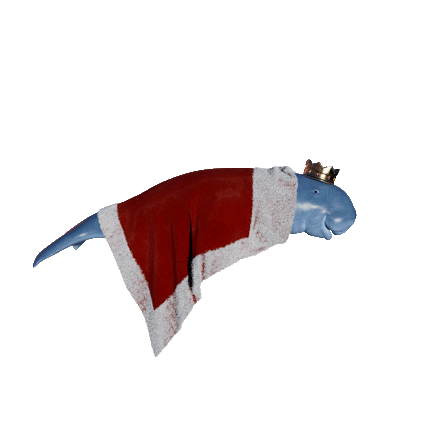#dugong
Text
🧬DNA sequencing has revealed that elephants belong in a superorder called Afrotheria—meet their closest relatives!
🐘Learn more at the Museum’s new exhibition The Secret World of Elephants. Discover new science about both ancient and modern elephants, see full-scale models of proboscideans, and more.
🦃Visiting the Museum this Thanksgiving? Best availability is on Monday and Tuesday of that week. Here are a few tips!
#science#amnh#museum#natural history#nature#animals#elephants#proboscideans#did you know#fact of the day#hyrax#manatee#dugong#sea cow#afrotheria#things to do in new york city#animal kingdom#stem
555 notes
·
View notes
Photo

Baby Dugong, Ningaloo reef, Western Australia
#tropical#dugong#western Australia#nature#marine life#sea#ocean#Australia#coral coast#ningaloo marine park#tropics
6K notes
·
View notes
Text
I am a survivor of Florida, having gone to college there for 4.5 years. There's a lot (a LOT) to not like about Florida, but the wildlife is not one of those things. So for this Wet Beast Wednesday, I'm gonna talk about the most famous Florida resident, the manatee. And why stop there? I'll discuss all the sirenians in one go.
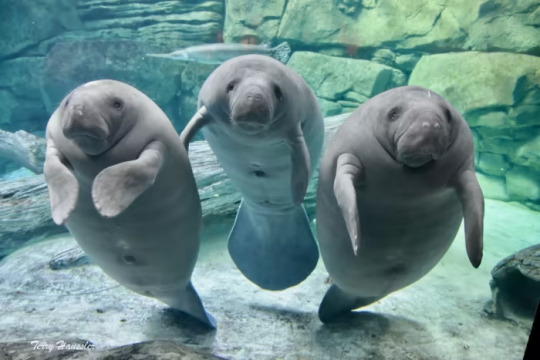
(image: three manatees facing the camera. They are rotund, resembling a potato in shape. Their heads are smaller and end in squarish snouts. They have two flippers at the front of the head. The tail is flat, wide, and round. They are grey all over)
The sirenians are a taxonomic order of marine mammals consisting of 4 living members: three species of manatee and the dugong. They are the only herbivorous order of marine mammals, a trait that has given the the nickname "sea cows". The name Sirenia comes from the sirens of greek myth. In the original story, the sirens were bird with the heads and breasts of women, but later stories turned them into mermaids and that's the version that's stuck. There are unconfirmed stories that European sailors (the most common story uses Christopher Columbus) mistook manatees for mermaids, which is why they're named after sirens.
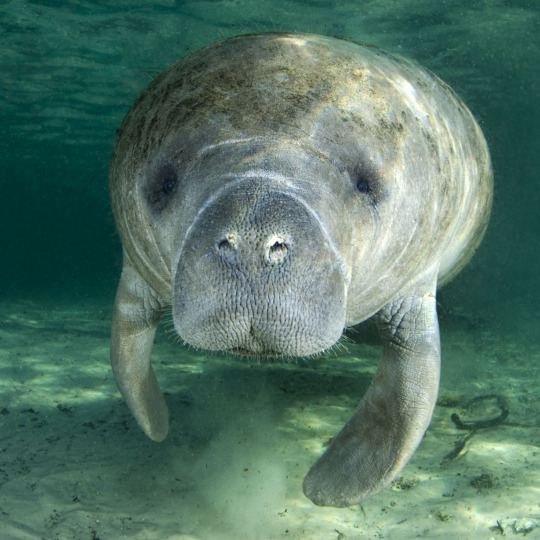
(image: a manatee facing the camera. Its face is visible, revealing two nostrils on a broad, flat shout covered in whiskers. It's eyes are located above the snout and are small and black. It is grey, but has patches of greenish algae growing on it)
Sirenians all have a pretty similar body plan. They are fusiform (bulky in the middle and narrower at the ends) and very bulky animals not built for speed. They don't ned to be fast (though are capable of short bursts of speed) because unlike other marine mammals, they are herbivorous. The vast majority of a sirenian's diet consists of sea grass and most of the rest is other aquatic plants. All species have been known to supplement their diet with invertebrates, mostly during times of poor food availability. When feeding, they move their snouts through the sediment, letting sensory bristles detect plants. They then use their flexible and muscular lips to pull up the sea grass, roots and all. While an individual can eat up to 15% of their body weight a day, they are known to seek out seagrass patches with higher nitrogen content instead of eating everything they can get. This reliance on seagrass limits the range of sirenians to shallow coastal areas, rivers, and estuaries in warm climates. Hearing and touch (with the bristles that cover their bodies) are their main senses. Their eyes are weak, making them almost blind. Sirenians are large, with the largest ever known, Stellar's sea cow, growing up to 10 meters (33 ft) and 11 tons. Mature sirenians are large enough to have no natural predators. Like all marine mammals not named sea otters, sirenians have a thick layer of blubber to keep them warm. Their bones are extremely dense and likely act as ballast to counteract the buoyancy of the blubber. In the marine mammal breath-holding competition, sirenians do pretty bad. They can hold their breath for about 15 minutes at max.
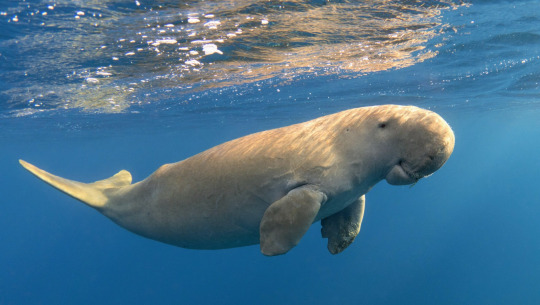
(image: a dugong. It is similar in appearance to a manatee, but skinnier. Its tail is a fluke with two points. Its head is larger and the snout and mouth point downwards)
Sirenian reproduction is somewhat poorly-understood. They only have a single calf at a time (with a gestation period of about a year) and mothers will raise them for one to two years. Calves mature quickly, reaching sexual maturity in around 2-5 years in manatees and 8 years in dugongs, though most females do not give birth until between 6 and 15 years. Their nipples are located behind the flippers, making a nursing calf appear to be sucking its mother's armpit. Sirenians are solitary animals who typically only congregate in groups when females are in estrus. Males are believed to compete for the right to mate and may engage in lekking. Lekking is when a male will claim a territory and mate with females in this territory while chasing opposing males out. Sirenians live long lives, with the oldest known individual being a female dugong that lived to 73. Despite how long they live, each female will only get pregnant a few times in her life.
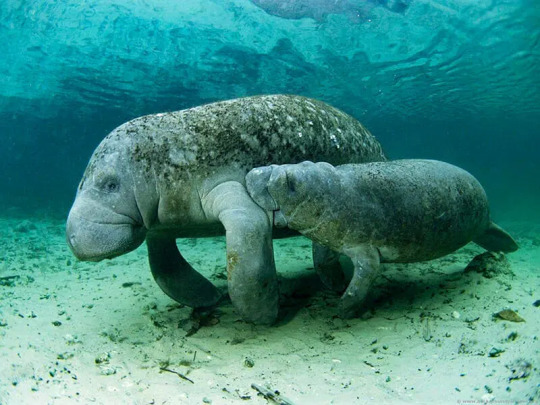
(image: a manatee mother with calf. The calf looks like a smaller version of the mother and is suckling, making it appear to be biting the mother's armpit)
As with all marine mammals, sirenians are descended from land mammals. The study of sirenian evolution has led to a surprising conclusion: the closest relatives of sirenians are elephants. It sounds weird, but there is substantial DNA evidence supporting this conclusion. In addition, the tusks of a dugong (see below) and flexible and prehensile lips of sirenians are based on the same structures as the tusks and trunks of elephants. It gets better, the next closest relative of both groups are the hyraxes, who look more like rodents than anything that should be related to an elephant or a manatee. All three are part of a clade called paenungulata, which is part of a clade called afrotheria. The other main group within afrotheria is afroinsectiphilia, which consists of aardvarks and various shrews. The afrotherian family reunions must be wild.

(image: a scientific diagram showing a cladogram of afrotheria and the groups within it. source)
The dugong (Dugong dugon) is the last surviving member of its family, which also included the now extinct giant Stellar's sea cow. The easiest way to tell a dugong apart from a manatee is its tail, which is shaped like a dolphin's fluke instead of the round tails of manatees. Internally, there are also multiple differences, many of them relating to the skull. The skull has a very distinct shape, with the upper jaw bending down at a sharp angle. The tip of the upper jaw has two short tusks emerging from it. These tusks are found in moth males and females, but develop differently. In males, they emerge when the calf reaches sexual maturity, while those of females only emerge later in life and sometimes not at all. It is believed that these tusks are used by males to fight over females, as males are often found with scars matching the shape of the tusks. Dugong teeth as simpler than those of manatees, being simple pegs. While manatee teeth will be replaced continuously through life, dugongs only get one set and have to make it count. Dugongs reach an average length of 3 m (10 ft) and 420 kg (930 lbs). Dugongs have the largest range of any sirenian, stretching from east Africa to the Solomon islands east of Australia. This range is fragmented rather than continuous and dugongs are separated into multiple isolated populations. The largest population is believed to exist in northern Australia.
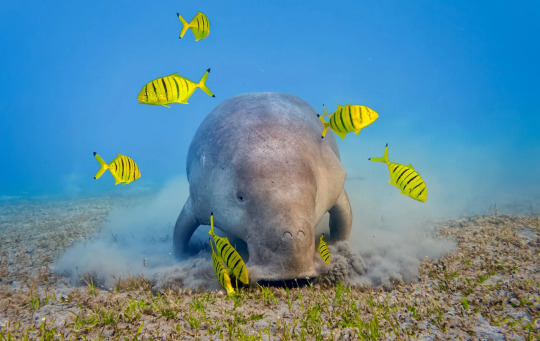
(image: a dugong feeding on seagrass, seen from the front. It's snout is being dragged through the sediment, leaving a cloud of dirt behind it. Small yellow fish surround it)
The west Indian manatee (Trichechus manatus) does not live in west India. It lives in North America. I dunno who named it, but you had one job. The species is divided into two subspecies: the Florida manatee (T. m. latriostris) found in the Gulf of Mexico and east coast of the United States, and the Antillean manatee (T. m. manatus) found in the Caribbean and down south to Brazil. The Antillean subspecies is much more poorly known compared to the Florida subspecies. The Florida manatee may be the most well-studied of all manatees due to the extensive conservation efforts regarding them since the 1970s. Like other manatees, the WI manatee has a round, paddle-like tail and fingernails on its flippers. Their diaphragms are divided into two hemidiaphragms, each of which contracts one lung. They have the northernmost territory of all manatees, which comes with some consequences. They are susceptible to stress and even death when exposed to water under 20 degrees C (68 F). They travel south during winter, usually to southern Florida, but conservationists still have to rehabilitate manatees harmed by cool water every year.
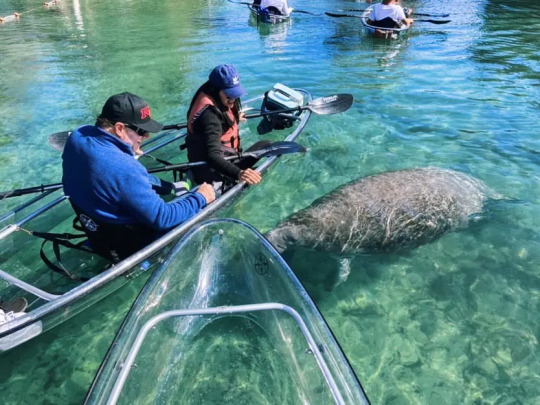
(image: tourists in transparent kayaks observing a west Indian manatee swim below them)
The Amazonian manatee (Trichechus inunguis) is the only sirenian that lives entirely in freshwater, residing in the Amazon river basin. They move seasonally inhabiting flooded areas during the wet season and lakes during the dry season. They fast during the dry season, subsisting off of their fat stores. There are believed to be multiple relatively isolated populations of Amazonian manatee, but studying them is difficult due to them preferring to live in areas away from humans. The Amazonian manatee is the smallest sirenian, reaching between 160 and 230 cm (5 ft 4 in to 7 ft 7 in) and 120 to 270 kg (265 to 595 lbs). Scientist Marc van Roosmalen has proposed the existence of a related species, the dwarf manatee, that lives only in one tributary of Aripuanã river, which is in the habitat range of the Amazonian manatee. Their existence is debated, but most manatee scientists think that they are misidentified juvenile Amazonian manatees.

(image: an Amazonian manatee with calf, seen from ahead and below. they have the same body plan as the above images, but are a darker grey with a white patch on the stomach)
The African manatee (Trichechus senegalensis) is the only species found in the old world, in west Africa from Senegal to Angola. They occupy the largest range of habitats of all sirenians, from tropical islands to flooded forests, to offshore sand flats, to lakes and rivers. They will swim up river during the wet season and back down during dry season. Some isolated populations live exclusively in rivers, never venturing out to sea. They are the most omnivorous of the sirenians, seeking out invertebrates to eat and stealing fish from nets. Many cultural groups in their range consider the African manatee sacred, some saying they used to be people and that killing one requires paying a penance. Mami Wata, a water spirit revered in throughout west, central, and south Africa, has been identified with manatees by some folklorists.

(image: an African manatee seen from the side in an aquarium. It looks almost identical to the west Indian manatee)
All sirenians are classified as vulnerable by the IUCN, except for the Antillean manatee, which is endangered. As they have few to no predators as adults, the primary threats for all sirenians come from humans. Boat strikes and getting tangled in nets kills and injures many individuals, possibly more than die of natural causes. This is not helped by them lacking fear responses to predators, meaning they don't flee from humans and boats. All species were historically hunted for their meat, blubber, and bones, reducing their populations. While all species are now legally protected, poaching and legal hunting by indigenous groups still occurs. They are also threatened by habitat loss as coastal development, pollution, and climate change reduces the range of seagrass. Damming has also reduced their ability to travel up rivers, cutting off valuable feeding ground. Learning about freshwater ecology will make you despise dams. In the United States, the west Indian manatee has become an icon of conservation, especially in Florida, where they have extensive legal protections. Controversially, the US government reduced their legal protections in 2017, much to the ire of many conservation groups. The manatee is the state marine mammal of Florida, presumably narrowly beating out dolphins and meth heads wandering around the everglades.

(image: two juvenile manatees who were abandoned by their mothers. They are being bottle fed by employees of the Cincinnati zoo. Ideally, they will be able to be released into the wild once weaned)
#wet beast wednesday#sirenia#manatee#dugong#west indian manatee#amazonian manatee#african manatee#marine biology#biology#zoology#ecology#animal facts#marine mammals
456 notes
·
View notes
Text
Animal of the Day!
Dugong (Dugong dugon)

(Photo by Smithsonian Ocean)
Conservation Status- Critically Endangered
Habitat- Indo-West Pacific Ocean
Size (Weight/Length)- 250 kg; 4 m
Diet- Seagrasses
Cool Facts- Although related to manatees, the dugong is the only living member of the Dugongidae family. Dugongs are shy and only group together on rare occasions during mass seagrass growth. During these gatherings, the water is filled with clicks and whistles as they communicate. Due to poor eyesight, only touch and sound keeps these animals socially connected. Dugongs have one of the longest periods to reach sexual maturity of any mammal, ranging up to 18 years before they can have offspring. Females only have a single calf every five years or so. The calf will stay with its mom up to three years before splitting off to find its own underwater meadow. Sadly, due to their slow movement and tendency to swim along the ocean surface, dugongs are easy targets for poaching and tangling plastics. Hopefully, other countries will follow Australia’s lead and create marine sanctuaries to protect these amazing animals.
Rating- 13/10 (Don’t let them go the way of the Steller’s sea cow.)
Requested by @callmepyrus
#animal of the day#animals#mammals#marine animals#wednesday#august 2#dugong#biology#science#conservation#the more you know#request#callmepyrus
546 notes
·
View notes
Text
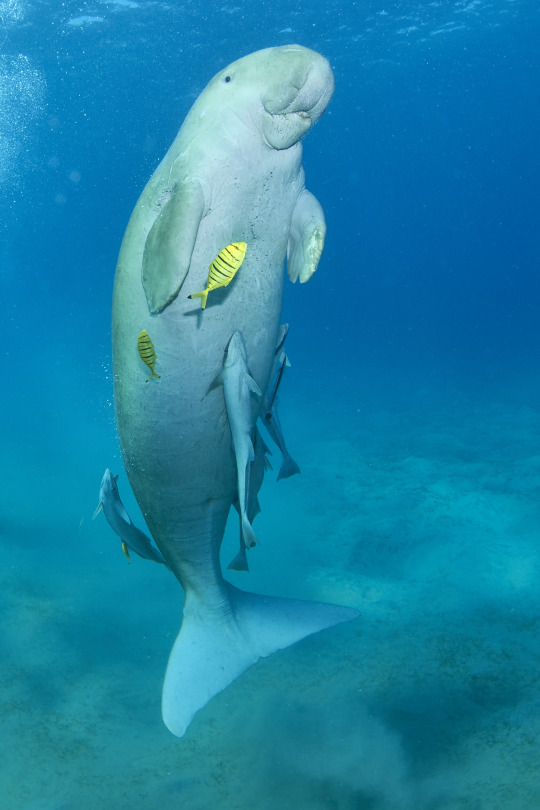
Dugong Dugong dugon
with golden trevally Gnathanodon speciosus, upper, and sharksucker Echeneis naucrates, lower
Observed by popaul, CC BY-NC
#Dugong dugon#dugong#Sirenia#Dugongidae#sirenian#non-ungulate#fish#Echeneis naucrates#sharksucker#Gnathanodon speciosus#golden trevally#Africa#Egypt#Indian Ocean#Red Sea
234 notes
·
View notes
Text
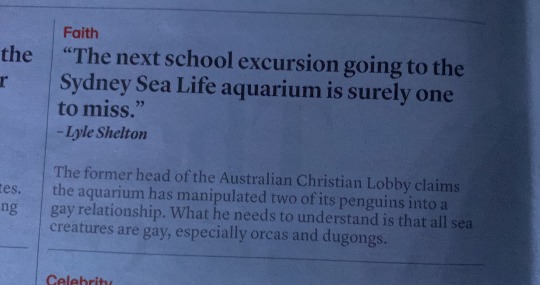
Who ever was in charge of the paper on July 8-14 2023 was going off goddamn-
42 notes
·
View notes
Text
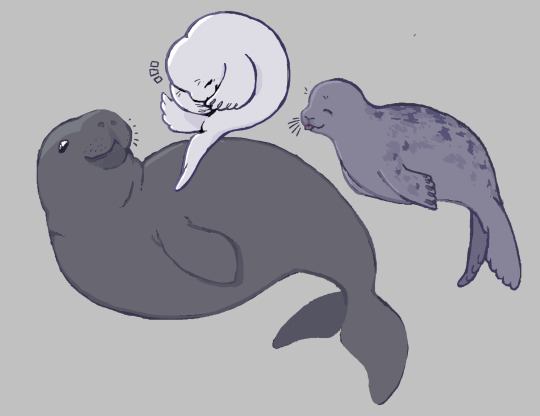
#my art#not splatoon#dugong#seal#i love dugong & seal yuri!#yayys#yeag its magma hours over here dfuhfdh
131 notes
·
View notes
Text
The walrus-fairy discourse reminded me of a story from Tales from Outer Suburbia by Shaun Tan about a dugong mysteriously appearing on a family's doorstep.
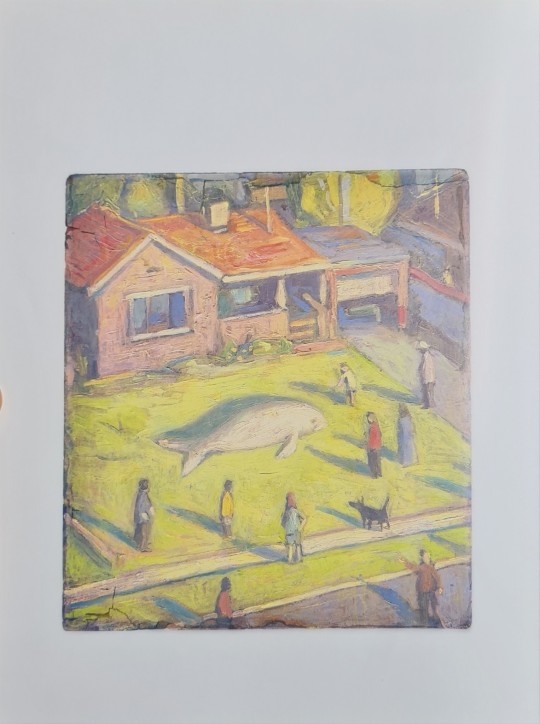
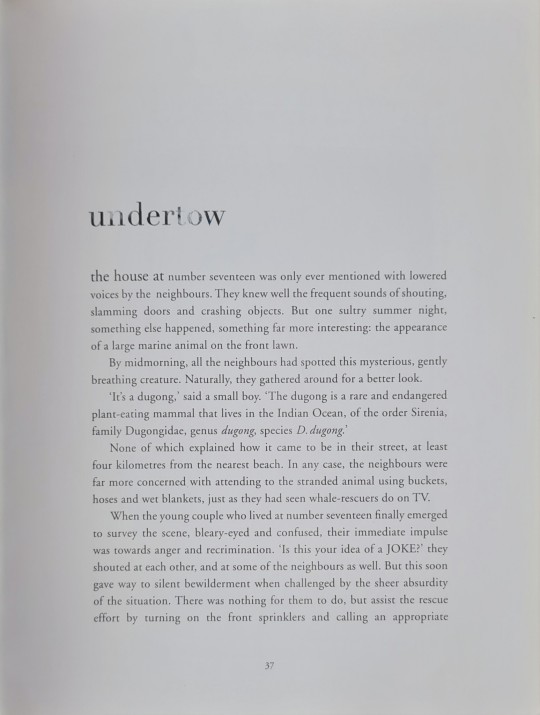


#walrus#fairy#walrus/fairy#tales from outer suburbia#shaun tan#undertow#dugong#marine zoology#autism#tw family#books#illustrated books#illustration#poetry#prose#prose poetry#short stories
22 notes
·
View notes
Text
Working on a new short story. A sapphic retelling of a Filipino myth about dugong. Been dreaming of the Pacific and the sensation of floating on the surf, limbs tangling in seagrass. Kisses under coconut palms, swimming in the moonlight, the sound of the surf a lover's whisper
#filipino authors#filipino myth#wip#writeblr#sapphic retellings#filipino author#asian fantasy#south east asian mythology#dugong#water thoughts#queer authors#queer fantasy#my writing
61 notes
·
View notes
Photo

28 notes
·
View notes
Text
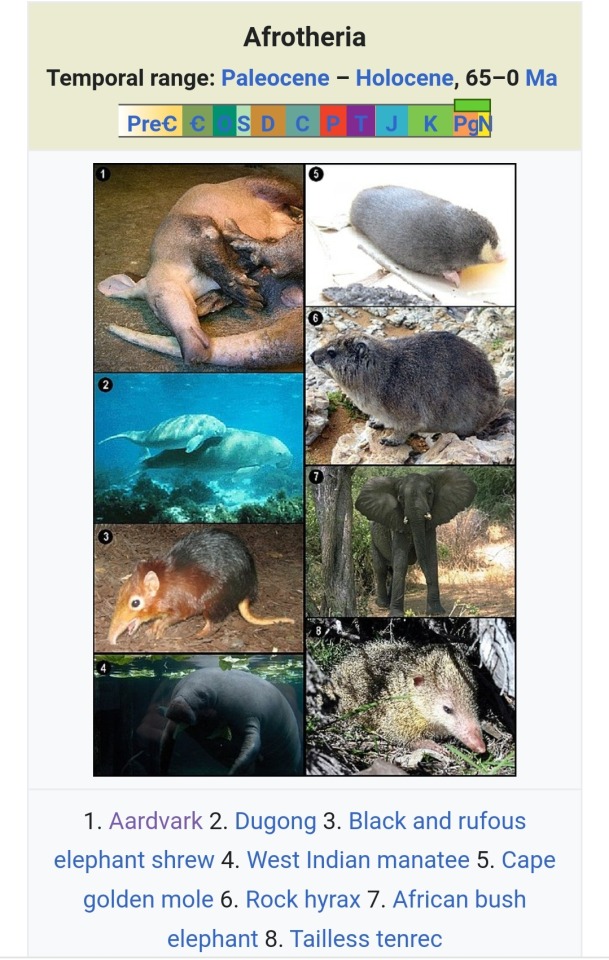
Shout out to Afrotheria, a whole clade of animals that must've mocked God for old-timey white people.
#animals#afrotheria#tubulidentata#aardvark#tenrec#hyrax#elephant#elephant shrew#dugong#manitee#Orycteropodidae#Orycteropus afer#critters#possumcollege#beasties
27 notes
·
View notes
Text


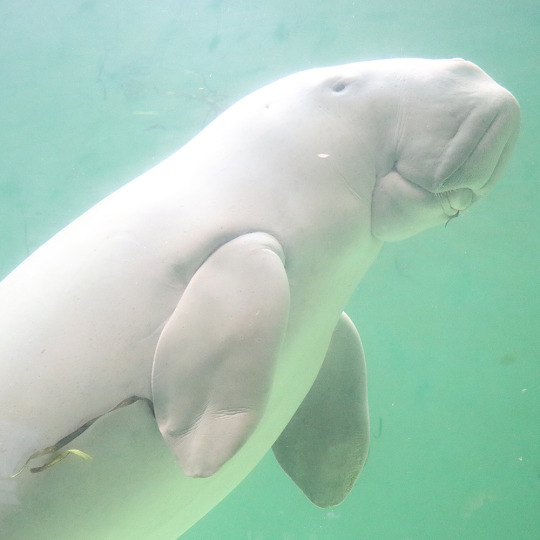


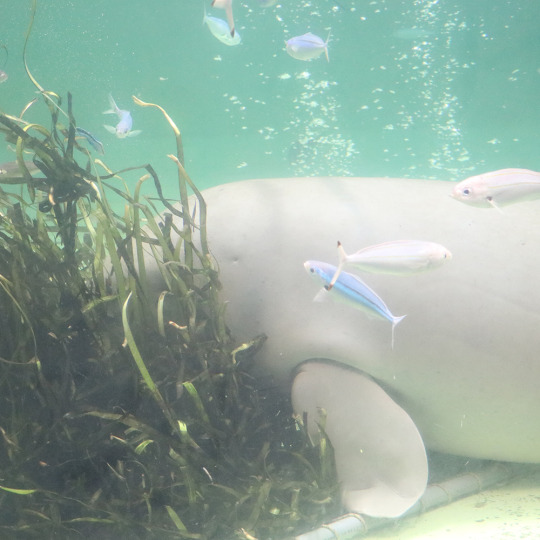
モシャァ…
She was eating her favorite food.

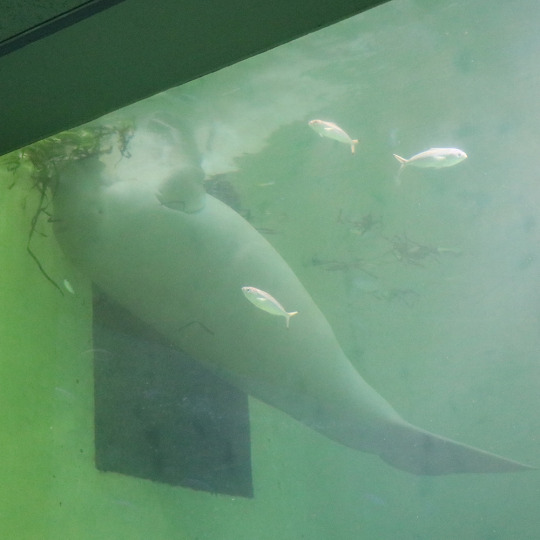
仰向け食べもやってました
@鳥羽水族館
She was eating while lying on her back.
@Toba Aquarium
43 notes
·
View notes
Note
Would you like to do Dugong the real-life mermaid?
—anyway, thanks for your hard work up until now!
Absolutely! Expect to see a post on them in a couple of day!

(Photo from Euronews)
47 notes
·
View notes
Text
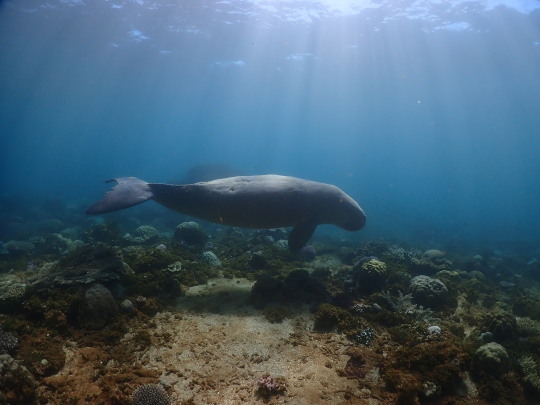
Dugong Dugong dugon
Observed by tom_heintz, CC BY-NC
28 notes
·
View notes
